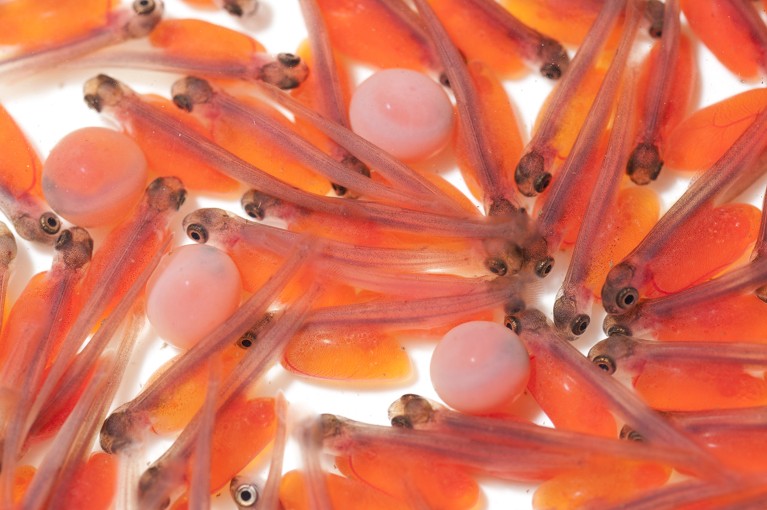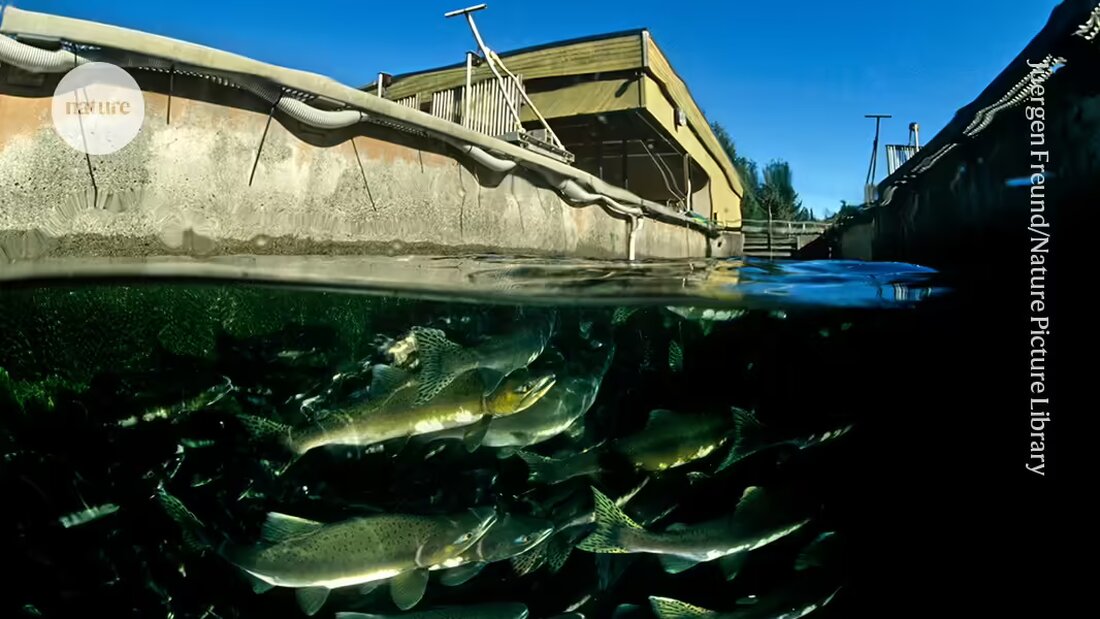Salmon raised in captivity and released into North Pacific rivers are mating with wild salmon, raising concerns among scientists about the fish's future. A new study published this month on pink salmon in Alaska predicts that such crosses will increase the size of the species' population but reduce its diversity. This could change the mating behavior of wild fish, making them less resilient to climate change and other disasters.
“Too many fish are being released,” said Peter Westley, a fisheries ecologist at the University of Alaska Fairbanks and an author of the study. He suggests that salmon farms reduce their production.
But fisheries regulators are pushing back against calls to limit operations, citing ongoing unknowns about ecological interactions between wild and aquaculture-raised fish, as well as economic competition with neighboring Russia.
“It's a controversial topic, but everyone wants to get to the bottom of it,” says Samuel May, a salmon genetic researcher with the U.S. Department of Agriculture (USDA) Agricultural Research Service in Orono, Maine, and lead author of the study.
Fishy family tree
Alaska's salmon hatcheries pump about a billion pink salmon into the North Pacific each year and have helped boost harvests for the state's salmon fishery, which was worth about $100 million last year. The fish grow in the sea and, if not caught, typically attempt to return to the place of their birth to mate. But not all released fish find their way back to the facilities where they were raised. Some, about 1-5% - millions of animals per year - stray into nearby streams where they can mate with wild salmon.

Alaska state law prohibits salmon farm production from harming wild salmon populations, and researchers have been trying for decades to understand how the practice affects the species. To understand how genes move between aquaculture-raised and wild fish, the Alaska Department of Fish and Game collaborated with scientists at the University of Alaska, local aquaculture associations that operate the hatcheries, and the National Marine Fisheries Service to form the Alaska Hatchery Research Program.
High crop yield
Between 2011 and 2020, field teams collected the carcasses of pink salmon that had returned and died in streams that flow into Prince William Sound, home to the largest salmon farming program in the world. Through genetic analysis, researchers created family trees for 284,867 individual fish, making it the largest salmon family tree study ever conducted. May and his colleagues then built on the population dynamics of this massive data set to model how breeding variation might affect 25 future generations of pink salmon.
The simulation showed that breeding variation could increase the overall population of wild pink salmon, potentially explaining reports of a recent increase. Last year, the fishing fleet was expected to catch 19 million fish - both farmed and wild - in Southeast Alaska. Instead, they caught almost 48 million.
"I think this is really good work," says Jim Murphy, a fisheries ecologist at the U.S. National Oceanic and Atmospheric Administration's Alaska Fisheries Science Center in Juneau, who was not involved in this study but has previously worked with some of the authors.
Genetic erosion
But the population boom has potential impacts, says May. The team's model predicted that crosses between farmed salmon and wild fish could reduce variation in a key reproduction-related trait - the time at which fish return to their spawning grounds - by up to 20%. In Prince William Sound, most farmed salmon swim upstream about a week later than the average wild fish, a trait that has been partially selected by farms to reduce the chances of interbreeding.
Wild fish return at different times throughout the summer, helping to reduce reproductive impacts in the event of a crisis such as a heat wave, disease outbreak or beaver dam at spawning grounds. If more pink salmon return at the same time, as the model predicts, such environmental disruptions could be devastating.
One of the big risks to salmon is “the genetic erosion of wild diversity,” says May. “What might happen in the future if such extreme weather events or warming events become more frequent?” asks May. “Will these populations be able to handle it?”
In the pink salmon
John McMillan, a fisheries ecologist with Conservation Angler, an Edmonds, Wash.-based advocacy group focused on protecting wild fish, says he thinks this is a significant finding. “We are going through a rapidly changing climate, and animals are going to need every ounce of diversity they have,” he says.
However, he adds that the model is limited by simplification. The study only looks at dynamics on the spawning grounds and holds constant all other factors, such as juvenile fish survival and foraging competition at sea, which are important to fully understand interactions between farmed and wild salmon.
And the results shouldn't be taken out of context or applied to other salmon species like sockeye, coho or ketal salmon, McMillan says, because pink salmon lead more predictable lives. They do not spend much time feeding in streams and all return to spawn at the same time of year at the age of two. In a review of more than 200 articles on the global impact of salmon farming of all species on their wild counterparts, McMillan and his colleagues found that 83% of articles reported a mild or moderate adverse effect.
The Alaska Department of Fisheries and Wildlife Management issues permits that allow farms to operate and determine how many fish they can release. Doug Vincent-Lang, the department's commissioner, says he needs more evidence that farmed salmon are harming wild populations so the department will reduce production of farmed salmon.
“We're always a little cautious when you try to speculate what will happen many generations into the future,” he says. “This information that has now been collected by my staff and the university raises some flags that we need to sit back and look at.”
The farms also support Alaska's coastal communities, says Vincent-Lang. Nationwide, they funded at least 4,200 jobs and $219 million in wages per year between 2018 and 2023.
Salmon abundance
However, there are other additional factors. That year, demand for pink salmon did not match supply, and the USDA purchased $70 million in canned pink salmon to stabilize the market. At the same time, Russia has expanded its farmed salmon production. “They flood the market with pink salmon and ketal salmon and thus drive down the price,” says Vincent-Lang.
He adds that questions about how fish interact in the ocean dominate many debates. Alaskan and Russian salmon likely compete for food in the North Pacific. If the state were to close farms because of their impact on wild salmon, Russian production could still harm the wild population, suggests Vincent-Lang.
“Are we going to completely shut down all of our pink salmon farming programs in Alaska?” asks Vincent Lang. “That’s a difficult question when you’re damaging your own economy.”

 Suche
Suche
 Mein Konto
Mein Konto

